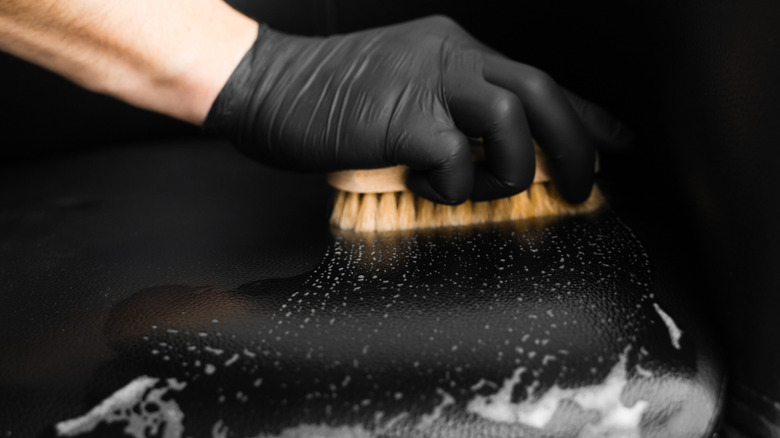Think Twice Before You Use Rubbing Alcohol To Clean Leather Furniture
Rubbing alcohol is a household product that can clean your leather furniture, but be careful because there are some possible long-term issues if you use this cleaning hack too often. While it is true that you can clean off some stains from leather with rubbing alcohol, such as paint or ink spots, repeated use of this cleaning method ends up harming your pieces in the long run. The key to whether or not alcohol is a viable option for your leather-upholstered items is to use the alcohol for specific kinds of cleaning and to not overdo it.
What exactly does alcohol do to leather? Even though alcohol dissolves stains and grime fairly easily, it will also dry the leather out. So after repeated application, you'll find your leather couch or seat will crack or become brittle. Alcohol can also bleach the color that your leather is dyed with, and you may notice major discoloration after continued exposure. It can also prematurely age leather fibers, causing them to feel rough to the touch or look less soft. Finally, alcohol residue that isn't properly cleaned away can accidentally transfer onto your skin, which for some people may result in irritation or an allergic reaction. This doesn't mean you need to give up this nifty hack completely, but rather you need to take care that you're using it for particular occasions rather than for long-term leather maintenance.
Tips for using alcohol as a cleaner and best alternatives
Overusing rubbing alcohol is a common mistake that you should avoid when cleaning leather furniture, but there are a few specific times when using alcohol on leather is the best approach. As a solvent and a good disinfectant, denatured or rubbing alcohol can be used to clean mildew or mold off of leather surfaces. Other stronger staining materials, like ink or paint, may be another reason to use alcohol since you may want its strength. However, for regular cleaning and maintenance, you'll want to use some alternatives to ensure the longevity of your pieces.
If the stain you're trying to tackle isn't too difficult, then a solution of dish soap and warm water may suffice. Blot the stain with a microfiber towel then follow with some distilled water. As for regular maintenance, opt for a leather cleaner, followed by a leather conditioner for a routine cleaning that helps maintain the leather's supple nature and original color. For either of these solutions, though, try a patch test on your furniture to make sure it responds well. You may also want to try keeping your leather furniture soft and supple with this natural ingredient: vegetable glycerin. Regardless, the moral of the story here is to think twice before you use rubbing alcohol to clean leather furniture.

